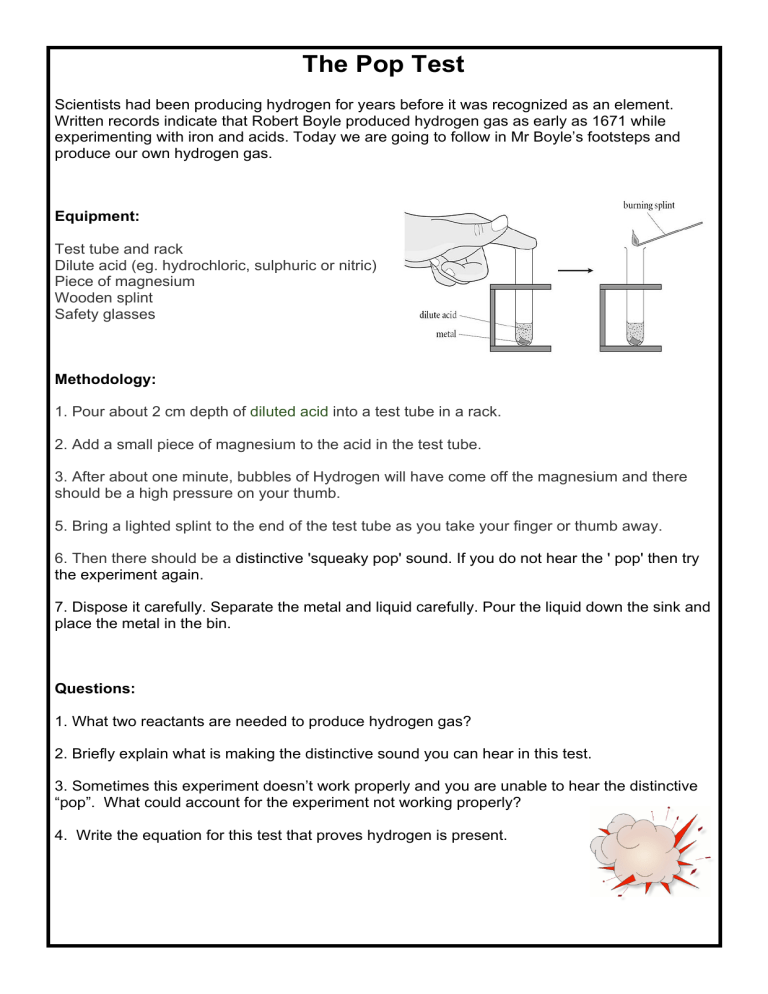The Pop Test: Hydrogen Gas Lab Experiment
advertisement

The Pop Test Scientists had been producing hydrogen for years before it was recognized as an element. Written records indicate that Robert Boyle produced hydrogen gas as early as 1671 while experimenting with iron and acids. Today we are going to follow in Mr Boyle’s footsteps and produce our own hydrogen gas. Equipment: Test tube and rack Dilute acid (eg. hydrochloric, sulphuric or nitric) Piece of magnesium Wooden splint Safety glasses Methodology: 1. Pour about 2 cm depth of diluted acid into a test tube in a rack. 2. Add a small piece of magnesium to the acid in the test tube. 3. After about one minute, bubbles of Hydrogen will have come off the magnesium and there should be a high pressure on your thumb. 5. Bring a lighted splint to the end of the test tube as you take your finger or thumb away. 6. Then there should be a distinctive 'squeaky pop' sound. If you do not hear the ' pop' then try the experiment again. 7. Dispose it carefully. Separate the metal and liquid carefully. Pour the liquid down the sink and place the metal in the bin. Questions: 1. What two reactants are needed to produce hydrogen gas? 2. Briefly explain what is making the distinctive sound you can hear in this test. 3. Sometimes this experiment doesn’t work properly and you are unable to hear the distinctive “pop”. What could account for the experiment not working properly? 4. Write the equation for this test that proves hydrogen is present.


